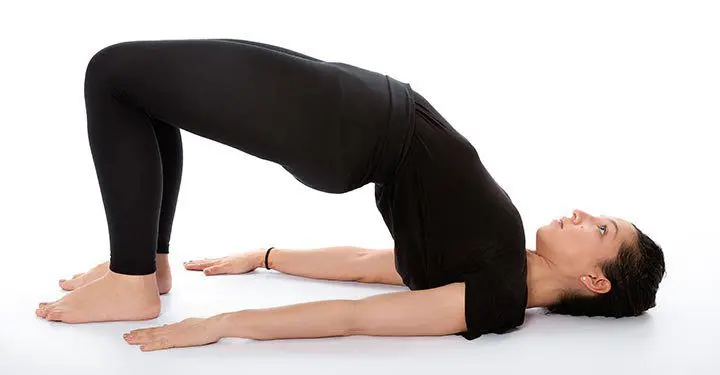Many women abandon yoga and fitness after childbirth, fearing that due to physical activity, milk will disappear. But you can get in shape, the main thing is to choose the right exercises.
– The body after childbirth is “loose and shattered”, I want to somehow collect it, and not only physically, but also energetically. No wonder: for nine months life developed in you, and with the birth of a baby, the physical connection was suddenly interrupted, – says Ulyana Uzhegova, instructor of perinatal and postnatal yoga at the Perm studio “Cora”, doula. – In a natural and humane approach to motherhood, there is the term “fourth trimester of pregnancy.” Its meaning is that for the first three months we “wear out” the baby, but already on ourselves: skin-to-skin contact, breastfeeding, carrying in our arms, sleeping together and taking warm baths with the baby. With this approach, the needs of the mother and the newborn are fully satisfied. If only there were au pair!
As for special physical activities, they are not required in the early postpartum period. We are talking about the first about forty days – the time that is allotted for the mutual addiction of mother and child to a new life (this period is distinguished in almost all cultures). Allow yourself to relax and let your body repair itself.
After this period, you can start yoga practice or other physical activity. It is recommended to do this very gently and gradually.
The child will perceive classes as a game with mom.
The most vulnerable female areas after childbirth are those that were subjected to severe stress and stretching during pregnancy:
– abdomen (uterus and its ligaments, white line of the abdomen, skin and muscles of the abdominal wall);
– pelvic bones;
– if you gave birth naturally – also the muscles of the pelvic floor and perineum.
It makes sense to work with these zones painstakingly and systematically.
1. Restore the muscle tone of the birth canal (he is the pelvic floor) such an exercise will help: lying on your stomach, simultaneously contract these muscles and relax your buttocks. Conversely, relax the muscles of the birth canal and contract the gluteus muscles. It is easier for a woman who has given birth to feel the muscles of the pelvic floor than for a woman who has not given birth: for this, it is necessary to contract (retract) the internal muscles at the level of the upper edge of the pubic symphysis (bone joints), passing to the sides and back to the coccyx – these are the muscles of the pelvic floor, which connect the muscles in figure eight vagina, buttocks and a little lower abdomen.
Don’t try to lose weight dramatically
2. Work with the divergence of the abdominal muscles involves the tension of the deep abdominal muscles as you exhale. Lie on your back, bend your knees so that your feet are directed to the floor. As you exhale, contract your pelvic floor muscles and the abdominal area below your navel. Relax as you inhale. Repeat the exercise daily for a total of 50-100 sets.
“On exhalation” is the key point: it is strictly forbidden to pump the press in the traditional sense in the first six months after giving birth!
During pregnancy, the uterus enlarges a thousand times, the abdominal organs are repositioned, the ligaments of the uterus are stretched, the intra-abdominal pressure changes … Treat your body carefully, do not provoke an even greater divergence of the abdominal muscles and fix them in this form. If you don’t know the specific exercises for postpartum recovery, just don’t try to pump up your abs in the first six months!
3. The most important exercises after childbirth are to open the chest and straighten (stretch) the spine.: sitting and standing poses with a straight back (the simplest and most comfortable ones are sukhasana – “comfortable pose”, tadasana – “mountain pose”).
From a sitting position, you can do twists on your stomach, turning either to the right or to the left and fixing your gaze behind your shoulder.
When performing “mountain pose” while standing, it is necessary to twist the tailbone “under you”, to pay main attention to finding the balance of the feet and aligning the pelvis.
An older child can help mom with exercise.
4. Poses for closing the pelvis (such as gomukhasana – “cow’s head pose” or garudasana “eagle pose”), as well as exercises for tightening the muscles of the pelvic floor (inside the small pelvis) and perineum (these are the muscles of the external genital organs) have a beneficial effect on the physical and psychological health of the mother, solving questions of the very “body closure” after childbirth. Exercises for opening the hip joints are strictly prohibited for the first six months after childbirth due to the physiological softening of the bones after childbirth and the need to restore them to their usual state.
Doula (childbirth assistant) Ulyana Uzhegova (left) with her sister
General principles of effective physical activity:
– twists on the stomach help to quickly restore the tone of the skin of the abdominal cavity;
– lateral stretching of the body and arms improves blood circulation and general well-being, promotes lactation, relieves fatigue;
– daily joint gymnastics gives a good mood and good health.










